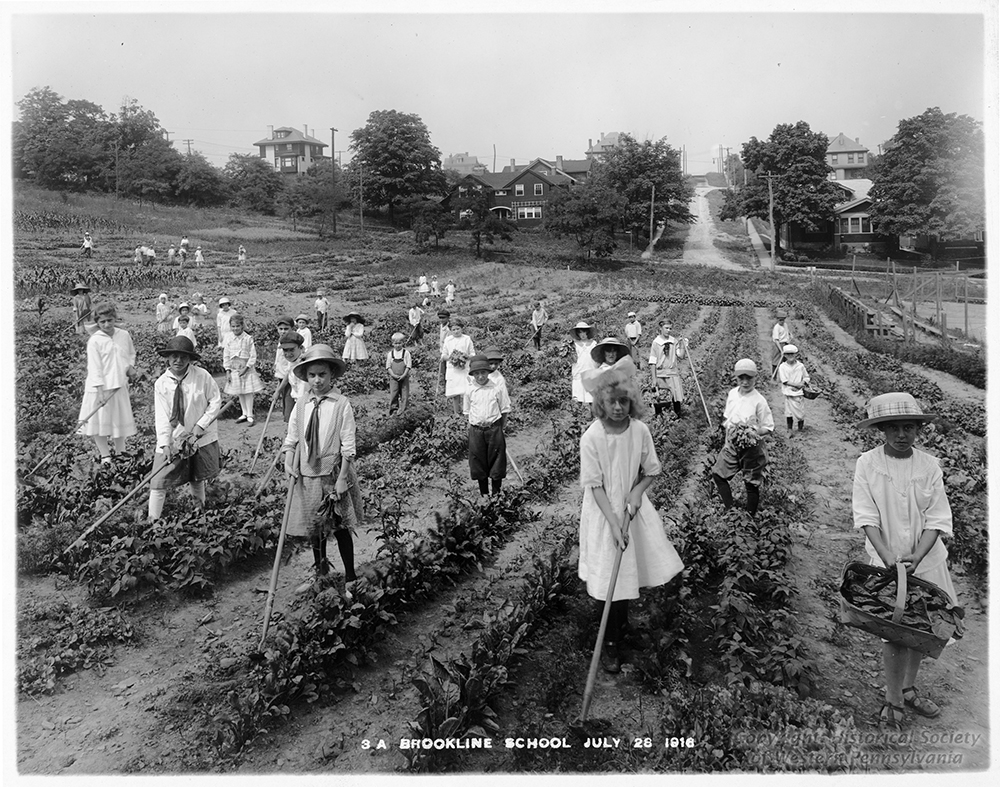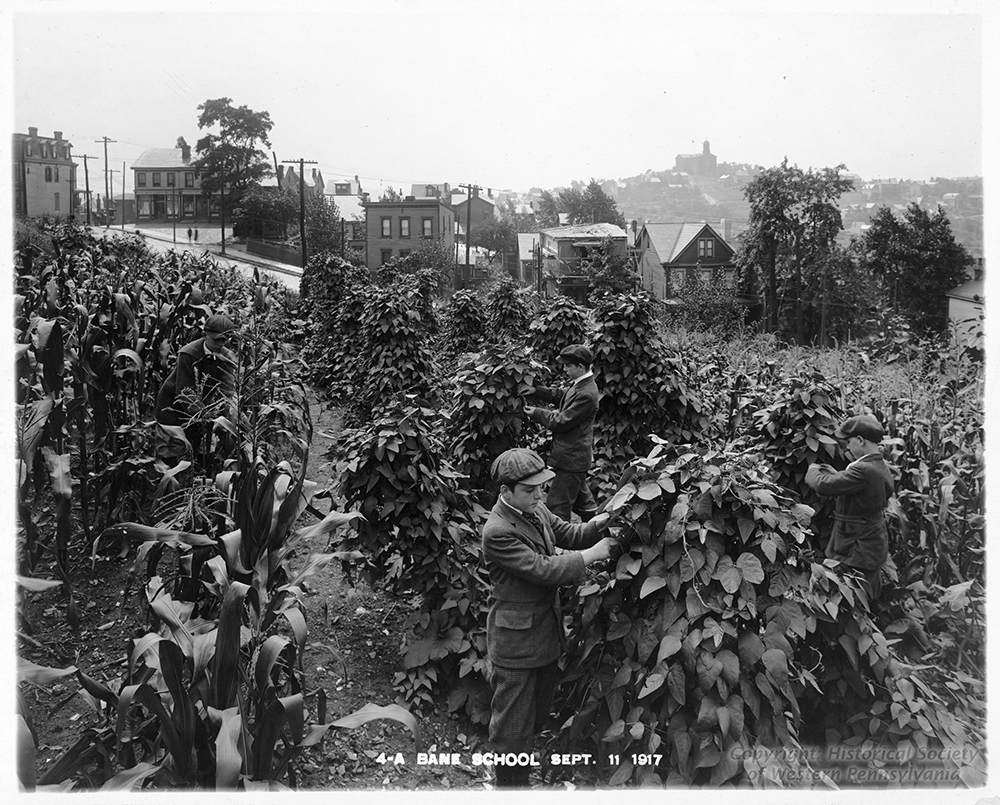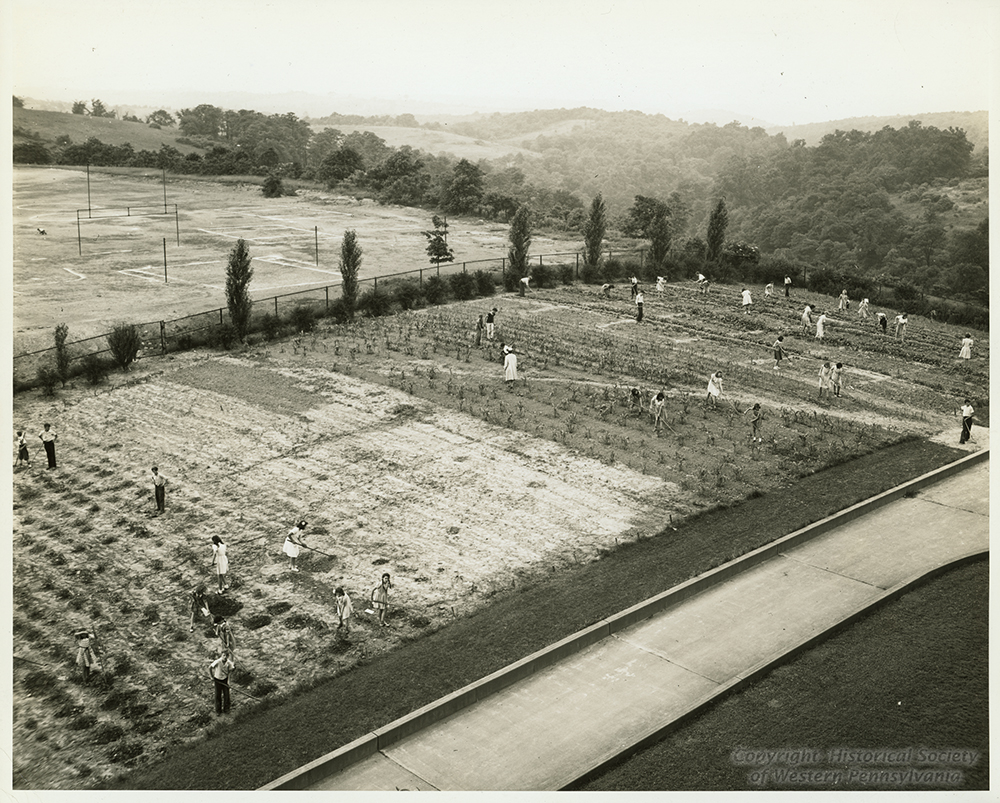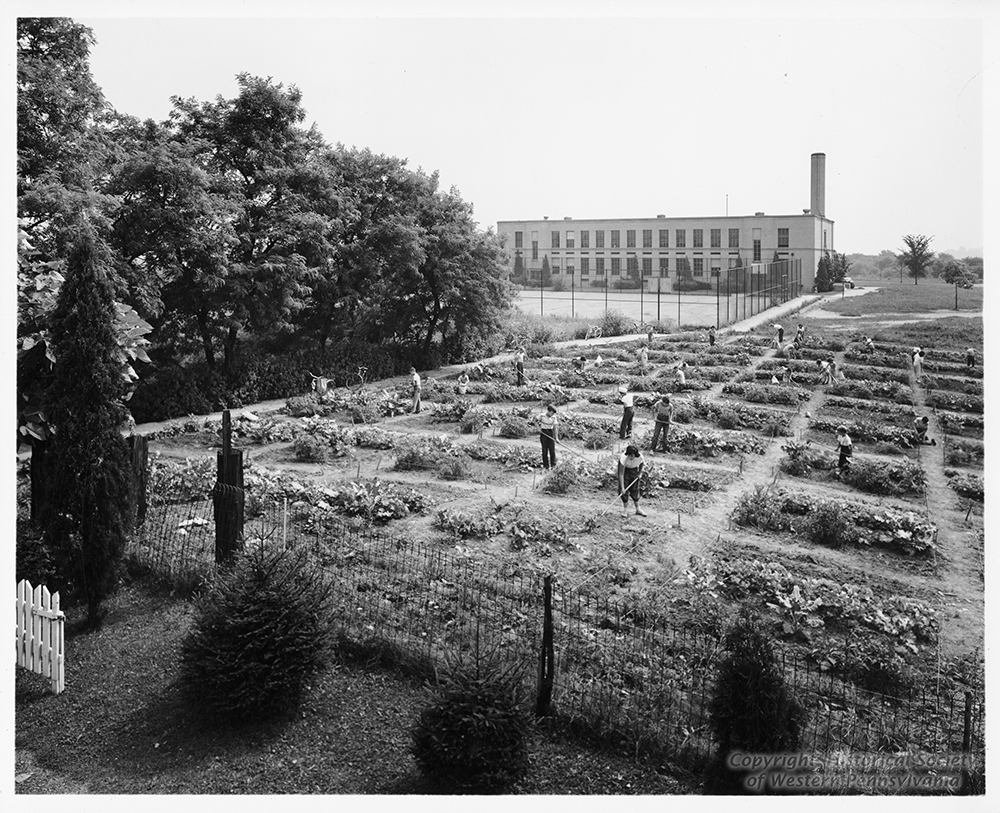In 1996, California restauranteur Alice Waters joined forces with a middle school principal to turn an acre of asphalt into the first Edible Schoolyard. Students in Berkley, Calif., cultivated a love of nature as they learned how to make healthy choices and prepare the fruits and vegetables they grew. During the next two decades, Edible Schoolyards spread across the country. While many now exist in the Pittsburgh region, they are not the first schoolyard gardens to be cultivated by Pittsburgh students.
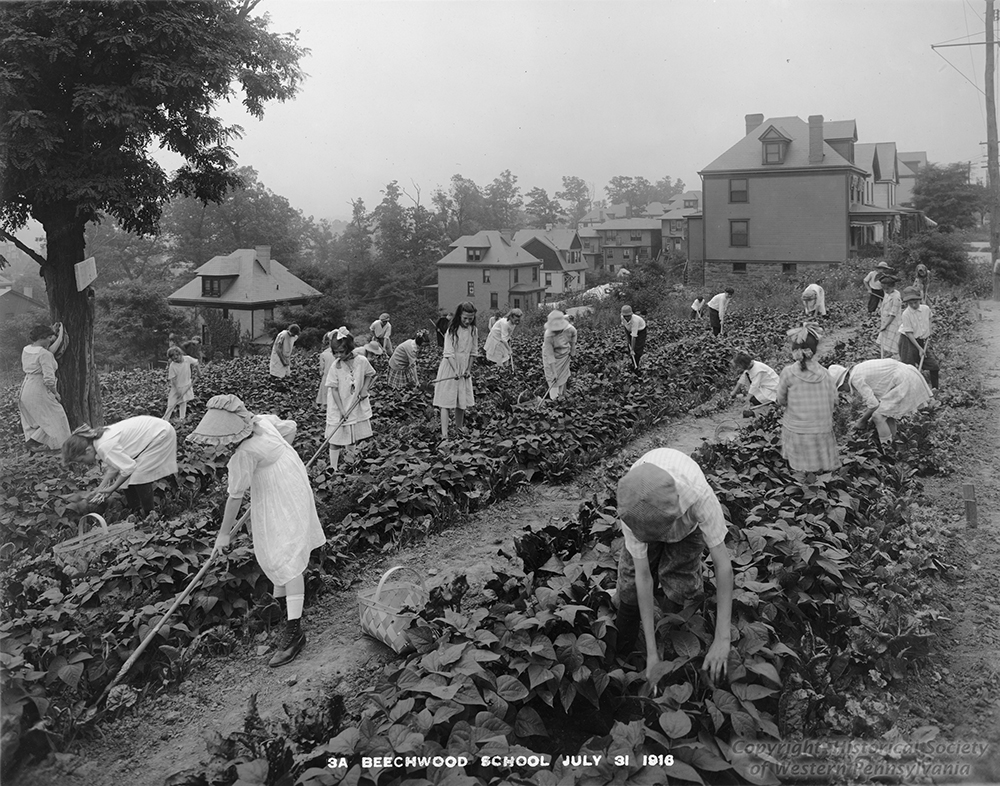
The idea of developing school gardens first caught on in the U.S. in the early 20th century, and by 1910 a handful of them existed in the Pittsburgh area. The industrious women of the Pittsburgh Playgrounds Association who turned unused land around schools into summer playgrounds also turned vacant school property into children’s gardens. They hired J.M. Randall, head of the Department of Nature Study at the University of California, to oversee the project.
By 1914, the association had 21 gardens throughout the city, and their value to children was widely acknowledged. When the association did not receive funding from the city budget to help run the program in 1915, the Board of Education saw its value and took it over as part of the public school curriculum.
Interestingly, while the value of the gardens was widely acclaimed, educators, parents, and others found different virtues in children spending time in the gardens. The gardens were the perfect laboratory for nature study. Spending time in them “vitalized” the rest of the schoolwork by giving children physical activity during the day. They taught children the dignity of labor while conversely keeping them out of the glass houses and stogie factories where many were employed. They enabled children to contribute to the family economy and stay in school longer. Ironically, for all the virtues imputed to the school gardens, “source of nutrition” was never mentioned.
As the U.S. entered WWI in 1917, the school gardens transformed into war gardens that helped replace produce lost by farmers who joined the Army. When the war ended in 1918, they transformed again into Victory Gardens as the U.S. promised large quantities of food to European countries devastated by war. Pittsburgh children continued to work in school gardens through the late 1930s. With the advent of WWII, Victory Gardens again became popular, but in the 1940s they spread far beyond schoolyards and became part of every patriotic American’s duty.
In the post-war consumer economy, school gardens fell by the wayside and lay fallow and forgotten for 50 years. In the 1990s, as childhood obesity became a national issue, school gardens were rediscovered and once again began to connect children with the study of nature, an appreciation for manual labor, and the goodness of home-grown food.
Lauren Uhl is the museum project manager & curator of food & fitness at the Heinz History Center.
The History Center’s Food & Fitness program is sponsored in part by


